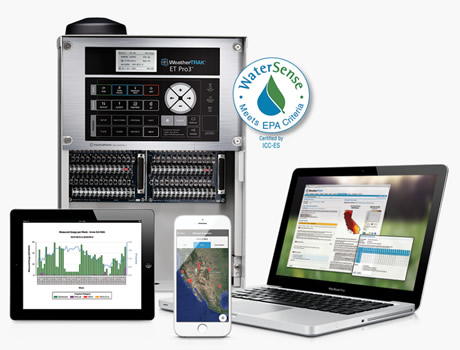
While every new landscape project brings its own set of challenges and opportunities, choosing to implement smart watering technology will consistently save money. The latest smart irrigation solutions enable watering schedules based on weather data and landscape conditions, reducing waste, saving money and avoiding a number of other issues.
The EPA estimates that 50% of outdoor water use is wasted due to overwatering caused by inefficient irrigation systems. New landscape designs provide an opportunity to implement best practices for water management. It is much easier and less expensive to incorporate smart watering technology during new landscape construction, than retrofitting after the fact.
Beyond water waste and cost savings, overwatering can contribute to plant diseases and property damage. But ensuring healthy landscapes and saving money are just the tip of the iceberg.
Five reasons why smart watering technology makes sense
- Lower water bills: Smart irrigation systems can reduce an annual water bill by as much as 30 percent by preventing water waste. These systems automatically suspend watering during rain, freezing conditions, or high winds. Sophisticated scheduling based on weather conditions minimizes evaporation and encourages water to soak in, reducing the total amount of water needed. Some water companies offer rebates for purchasing specific smart irrigation controllers.
- Reduces plant replacement cost: Proper watering keeps plants healthier, encourages stronger roots, and discourages weeds, disease, and fungus growth.
- Saves time and lowers labor cost: Some controllers let you visualize usage and get alerts on your computer or mobile device for irrigation leaks. Some also enable turn-on or shut-off control from a mobile device. Once a smart controller is programmed using site-specific data, the controller adjusts the watering schedule without manual intervention. Truck rolls and expensive manpower are also greatly reduced.
- Compliance with sustainability goals: “Set and forget” technology makes it easy to comply with local watering mandates, corporate sustainability targets, and other regulatory restrictions. Sophisticated systems can even optimize flow to ensure your landscape receives the full amount of water it needs within tight restrictions and water windows.
- Earn LEED credits: Leadership in Energy and Environmental Design (LEED) is a rating system devised to evaluate environmental performance and sustainable design. The system is credit based, allowing projects to earn points for environmentally friendly actions taken during construction.
Look for the EPA’s WaterSense certification on any smart watering system being considered. HydroPoint leads the market in smart landscape irrigation technology and its WeatherTRAK irrigation controllers earned perfect WaterSense certification scores.
Learn more about WeatherTRAK’s smart water performance.

